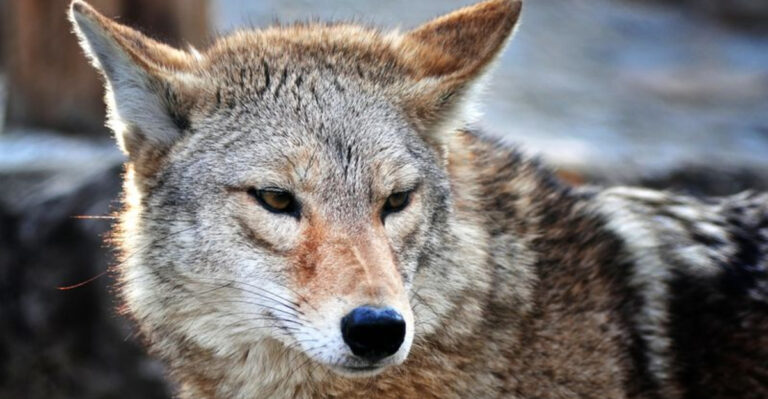What Do Rhinos Eat? 17 Foods They Adore

Ever wondered what fuels those massive, armored tanks of the animal kingdom? Rhinos may look fierce with their horns and thick skin, but these gentle giants are actually vegetarians with hearty appetites.
From grasses to fruits, their diet varies depending on their species and habitat, with some rhinos munching through hundreds of pounds of vegetation daily!
1. Tall Grasses
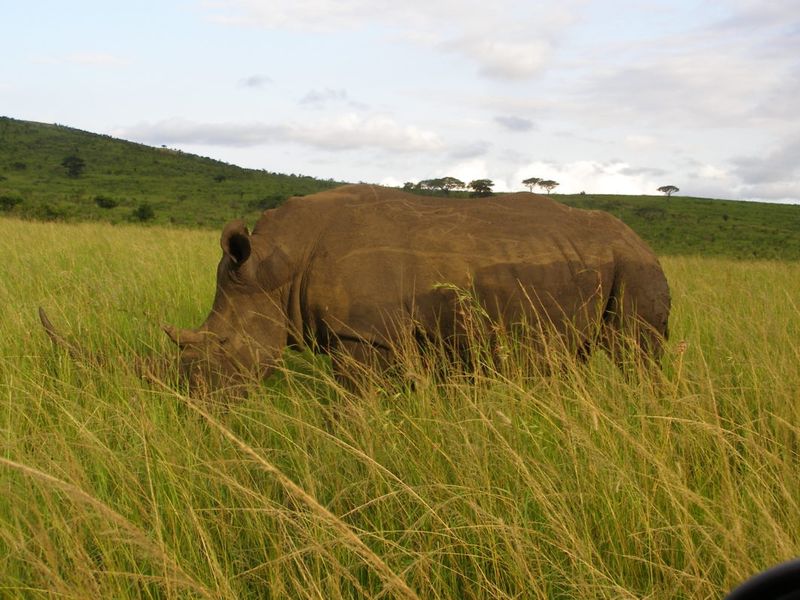
Nothing makes a rhino happier than a field of tall, swaying grasses. These prehistoric-looking creatures spend up to 16 hours daily grazing, methodically working through patches of grass.
White rhinos particularly favor this food source, using their wide, square lips to efficiently crop grass close to the ground like living lawnmowers.
2. Leafy Branches
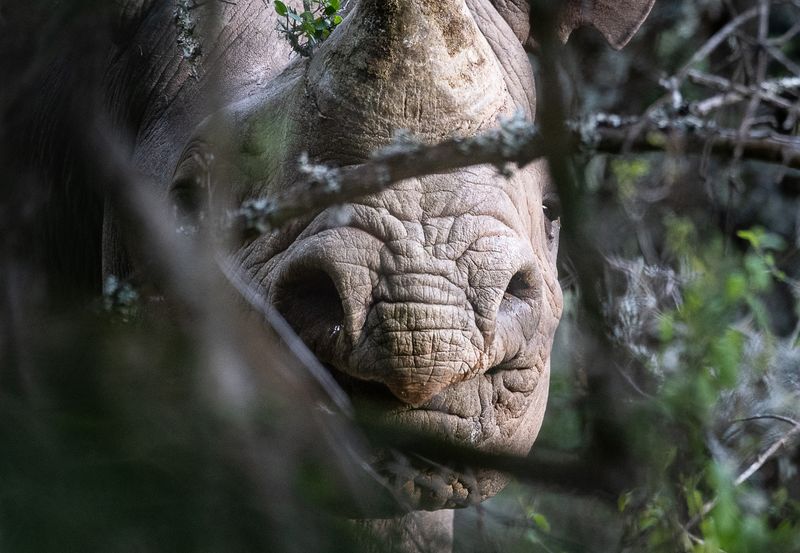
Black rhinos have a special talent for snapping branches with their hooked upper lips. Unlike their grass-loving cousins, these browsers prefer woody vegetation and can reach branches up to 6 feet high.
The satisfying crunch of twigs and the nutritional punch of leaves make this a rhino delicacy. They’re surprisingly delicate eaters despite their massive size.
3. Thorny Bushes
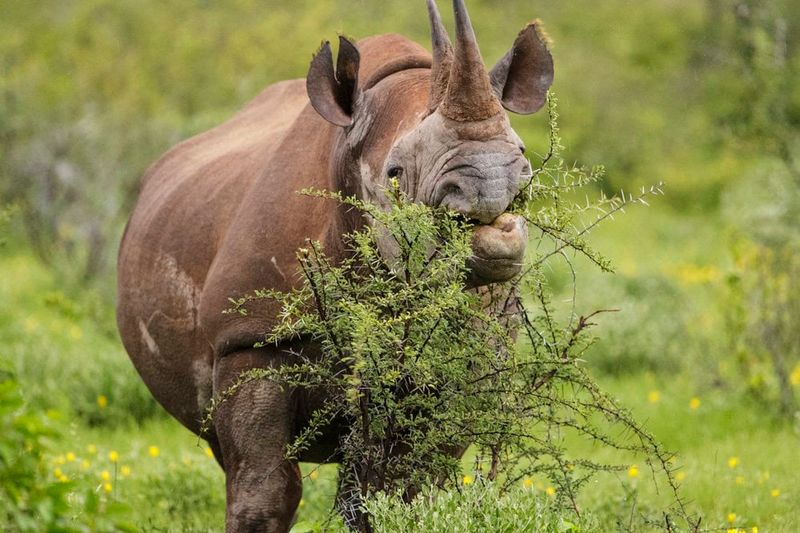
Amazingly, rhinos don’t shy away from plants that would make humans wince! Their thick skin allows them to munch on thorny acacia bushes without discomfort.
Black rhinos especially relish these prickly treats, pushing through thorns to access the nutritious leaves. Their tough mouths have evolved to handle plants that would puncture other animals’ digestive tracts.
4. Juicy Fruits
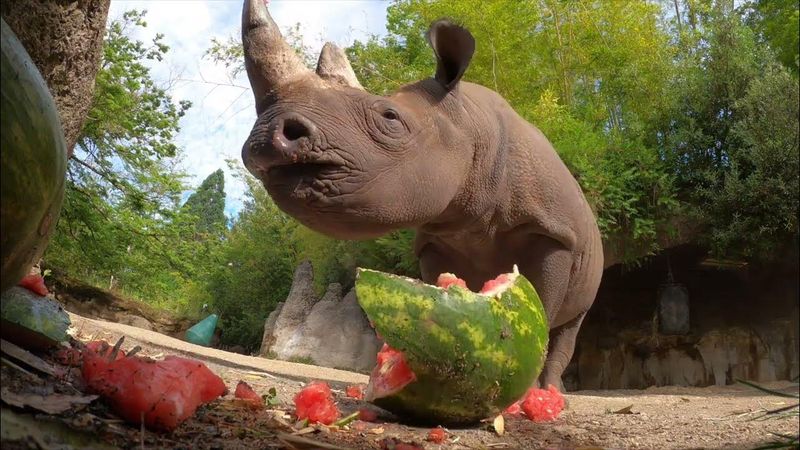
Fallen fruits create a sweet change of pace in a rhino’s plant-based menu. Asian rhinos particularly enjoy mangoes, apples, and other forest fruits they encounter during their foraging.
The natural sugars provide quick energy bursts for these massive mammals. Watching a 4,000-pound rhino delicately picking up and savoring a small fruit reveals their surprising gentleness.
5. Aquatic Plants

When near water sources, rhinos don’t hesitate to wade in for a tasty aquatic salad. Water lilies, reeds, and other moisture-loving plants provide important variety in their diet.
These water plants offer different nutrients than dry-land vegetation. Sumatran rhinos are particularly fond of these soggy treats, often spending time in swampy areas to access this food source.
6. Shrubs and Bushes
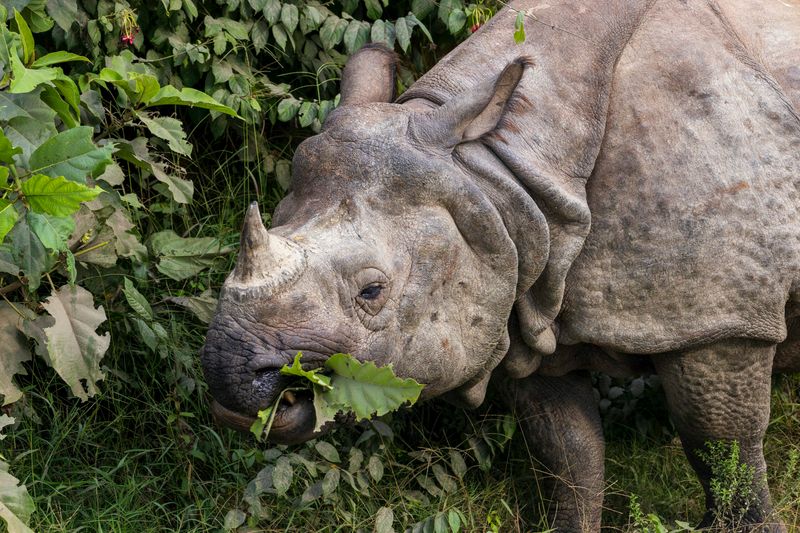
The dense foliage of various shrubs provides rhinos with both nutrition and shelter. Black rhinos favor these woody plants, using their prehensile upper lips to grab and strip leaves with surprising precision.
Different shrub species offer varying nutrients, helping rhinos maintain a balanced diet. They’ll often return to the same shrub patches as the plants regrow.
7. Succulent Plants

During dry seasons, water-storing succulent plants become rhino lifesavers. These moisture-rich plants help rhinos stay hydrated when water sources are scarce.
Desert-adapted rhinos have learned to seek out these juicy plants. The thick, fleshy leaves provide both hydration and nutrition, making them especially valuable in arid environments where other vegetation withers.
8. Tree Bark
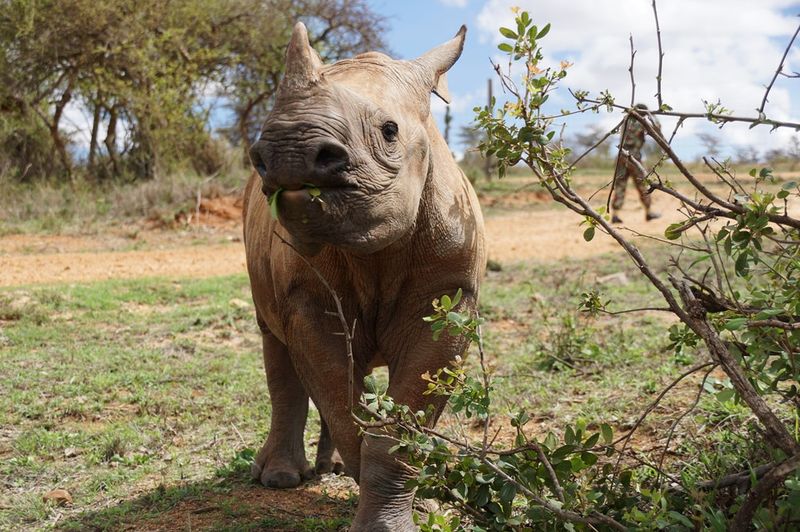
Sometimes rhinos need a little fiber in their diet! Tree bark contains essential nutrients and helps with digestion. Black rhinos will strip bark from trees using their powerful jaws and lips.
This behavior also helps maintain their teeth. While not their primary food source, bark becomes more important during dry seasons when other vegetation is limited.
9. Wild Berries
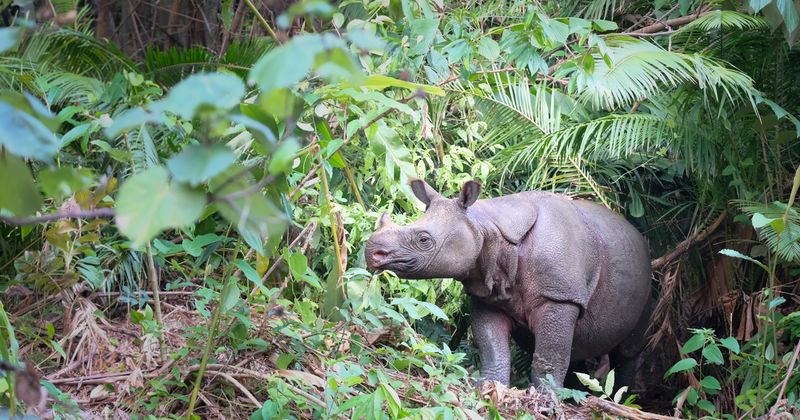
Berry patches offer rhinos sweet, nutritious treats that break up their usual leafy diet. Asian rhinos particularly enjoy finding these colorful morsels during their forest wanderings.
Rich in vitamins and natural sugars, berries provide concentrated energy. Watching a massive rhino delicately picking tiny berries from bushes showcases their surprising dexterity despite their bulk.
10. Fresh Shoots

After fires or rains, tender new plant shoots become rhino delicacies. These fresh growths are packed with nutrients and are easier to digest than mature plants.
Rhinos can sense areas of new growth and will travel considerable distances to find them. The high protein content in these young plants makes them particularly valuable for nursing mothers and growing calves.
11. Root Vegetables

Occasionally, rhinos will dig up root vegetables with their horns and feet. These underground treasures provide essential minerals and carbohydrates that surface vegetation might lack.
Javan rhinos have been observed unearthing wild tubers and roots. During dry seasons, these underground food sources become increasingly important as they retain moisture when other plants wither.
12. Mineral-Rich Soil

Though not technically food, rhinos regularly consume soil at natural salt licks. This behavior, called geophagy, helps them obtain essential minerals missing from their plant diet.
These massive creatures can identify soil with high mineral content through smell. The minerals aid digestion, neutralize plant toxins, and supplement their diet with elements like calcium, magnesium, and sodium.
13. Seed Pods

Fallen seed pods create crunchy, nutritious snacks rhinos can’t resist. These protein-packed packages often become available seasonally, creating natural feeding cycles.
Black rhinos use their dexterous upper lips to sort through and pick up individual pods. The varied textures and flavors provide enrichment for these intelligent animals, while the seeds inside deliver concentrated nutrition.
14. Cultivated Crops
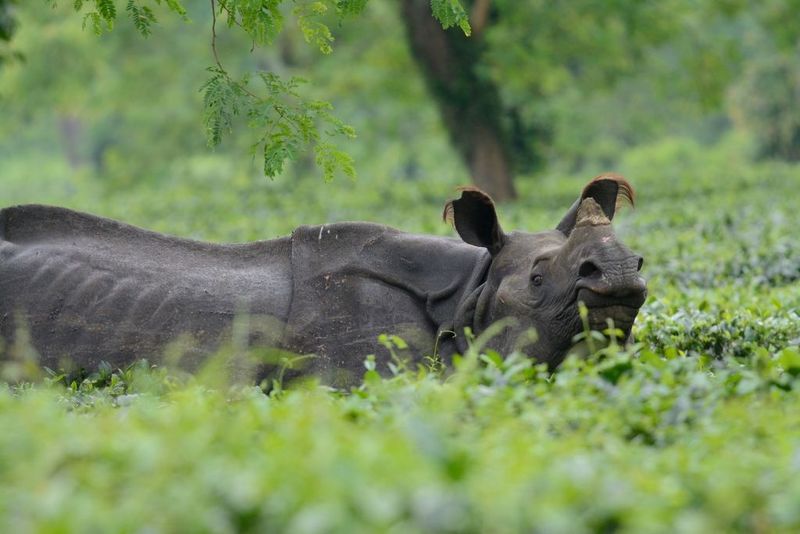
Farm-adjacent rhinos sometimes develop a taste for agricultural bounty! Sugarcane, corn, and other crops offer calorie-dense alternatives to wild foods, though this creates human-wildlife conflicts.
The sweet taste and easy accessibility make cultivated fields irresistible. Conservation efforts often focus on creating natural buffers between rhino habitats and farmlands to prevent these midnight snack raids.
15. Bamboo Shoots
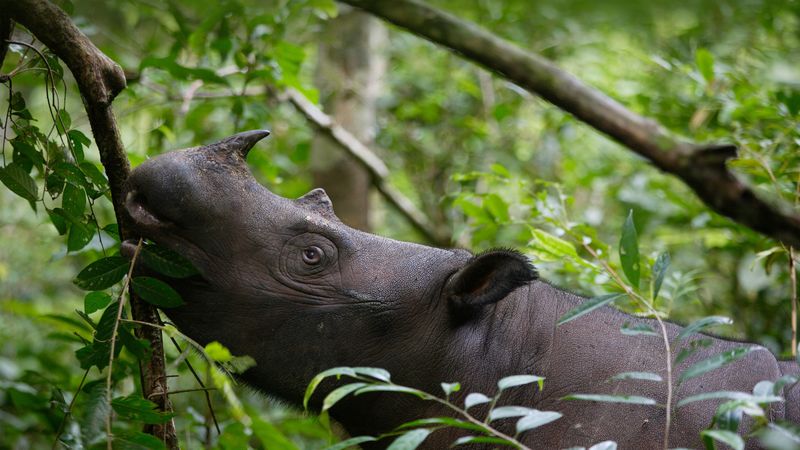
Asian rhinos have a particular fondness for tender bamboo shoots. The Sumatran and Javan rhinos will trek through dense forests seeking out these crunchy delicacies.
Bamboo provides excellent fiber and nutrients essential for digestive health. Young shoots are especially prized for their softness and high water content, making them perfect for hot tropical days.
16. Flowering Plants
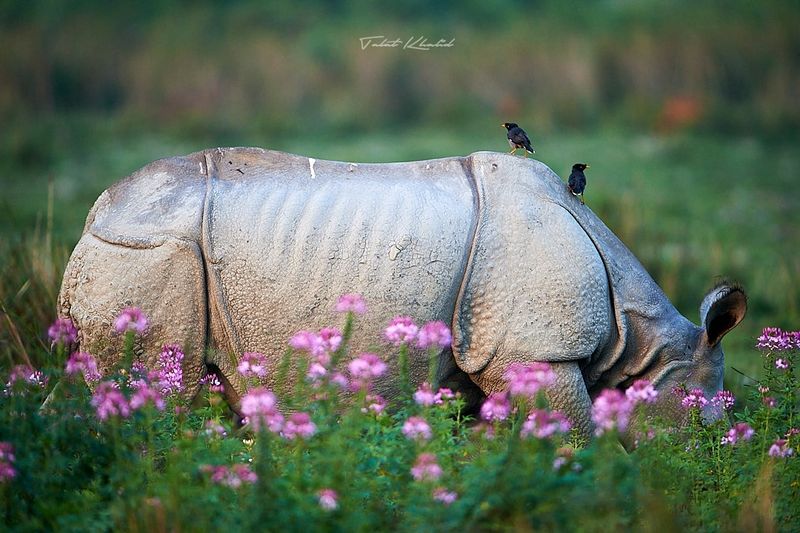
Colorful blooms aren’t just pretty – they’re rhino snacks too! Flowers provide different nutrients than leaves and stems, adding variety to their diet.
Indian rhinos particularly enjoy flowering plants in their forest habitats. These floral treats are seasonal bonuses that rhinos seem to actively seek out, suggesting they can distinguish these special treats from regular vegetation.
17. Zoo Nutritional Pellets

Captive rhinos receive specially formulated pellets packed with balanced nutrition. These scientific diets ensure zoo rhinos get proper vitamins and minerals that might be missing from their limited browse options.
The pellets are often mixed with hay and fresh vegetation to mimic natural feeding behaviors. Good zoos work hard to recreate natural feeding patterns, even hiding food to encourage foraging behaviors.


